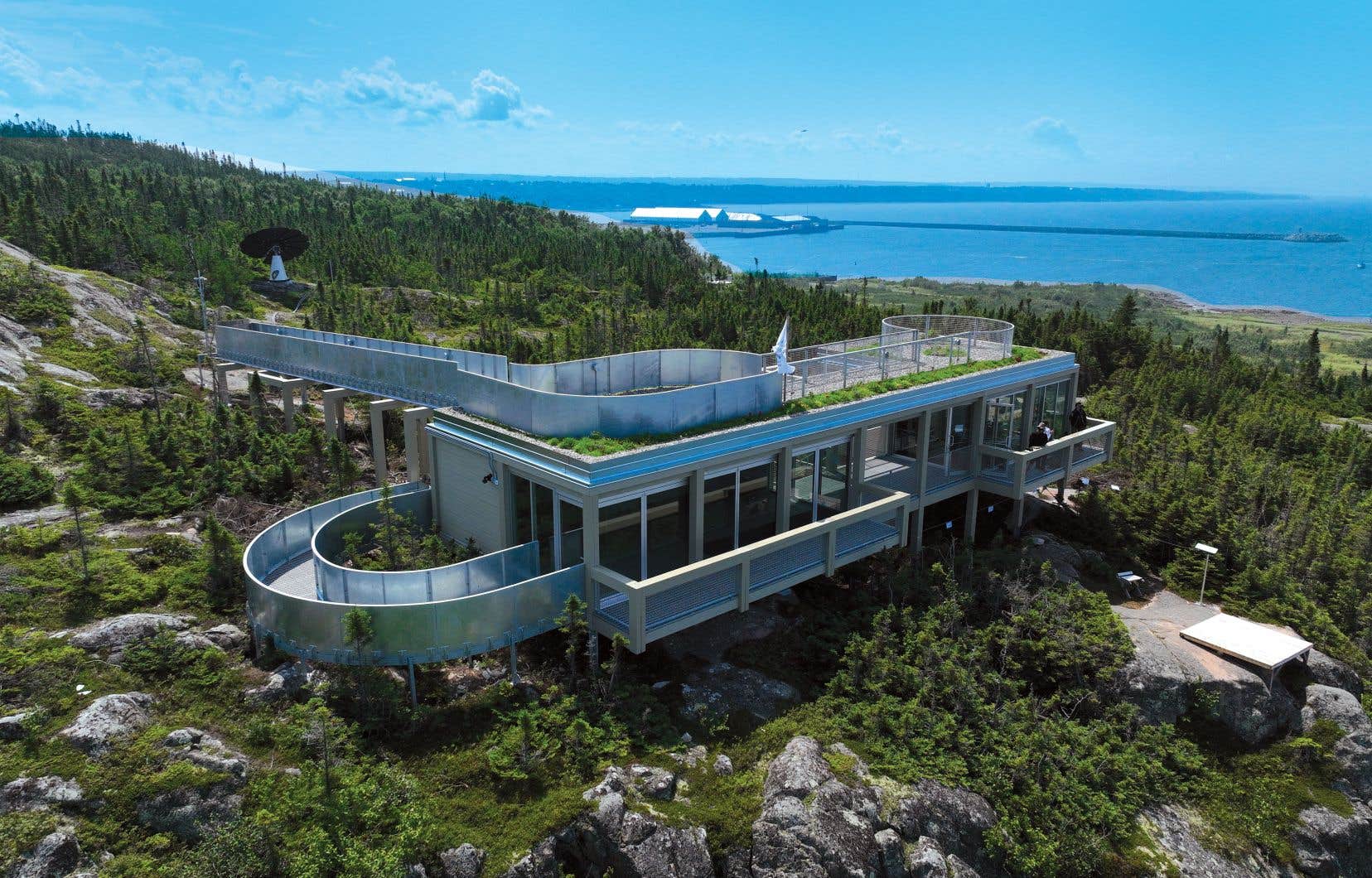This text is part of the special Pleasures notebook
In the Bas-Saint-Laurent, the Putep’t-awt trail allows you to reach the brand new beluga observation post, without risking disturbing either their health or their social behavior.
It is not new that the Gros-Cacouna site, and its mountain overlooking the St. Lawrence River, has been used as a beluga observation post, both for First Nations members and Parks Canada scientists. But since this year, the vocation of this ancestral territory has taken on its full meaning with the construction of the first terrestrial beluga observatory in the estuary, under the aegis of the Grand Council of the Wolastoqiyik Wahsipekuk First Nation (WWFN). After being expatriated by the federal government in 1869, this nation, formerly called the Maliseet of Viger, gathered in the 1980s on its ancestral territory and founded a large band council there in 1987. Today, its approximately 2,000 members live throughout Quebec, and even in New Brunswick and Maine.
Common vision
“Belugas were seen as a constraint by people in the industrial sector,” explains Grand Chief Jacques Tremblay, elected in 2016. “I wanted them to be seen as an opportunity for development, but also for environmental protection.” Thus, in 2017, the idea was born of a site dedicated to observing this species of cetacean that is still in danger, in the very heart of its nursery. Despite the reluctance, the vision of the Grand Chief and his community did not waver, and his meeting with Patrice Corbeil and Robert Michaud, from the Group for Research and Education on Marine Mammals (GREMM), was decisive. Together, they began to dream of a place where the economic development of the port could continue without disturbing the belugas. After several steps to consolidate the foundations of the project in the making, the beluga observatory is being built this year on these “land stripped bare at low tide,” composed of salt marshes and peat bogs, where plant and animal species abound. For Grand Chief Jacques Tremblay, this is the culmination of a project by the WWNP and all stakeholders: economic players, the municipality, the MRC, and the federal and provincial governments. Quite an achievement in a very busy port area, whose location at the mouth of the Saguenay and at the centre of a major road network makes it a major player in maritime and land transportation.
Window on the belugas
While the adverse effects on the health of belugas are tending to decrease thanks to the reduction of certain contaminants released into the river, their immune and reproductive capacity remains very worrying: this is essentially what Robert Michaud, President and Scientific Director of GREMM, says. The impact of noise, commercial maritime traffic and increasing recreational boating make this species still vulnerable. “This beluga observation site is an initiative of the Wolastoqiyik Wahsipekuk nation,” Robert Michaud emphasizes. “It is designed to host an activity in partnership with GREMM, the Marine Mammal Observation Network, Parks Canada and SEPAQ.” For GREMM, it is about applying the very principles that motivate its vocation: merging the state of knowledge with scientific interpretation and popularization. A closed section allows GREMM scientists to continue their research work and another area is dedicated to welcoming visitors: the immersive experience Window on Belugas. Using drones and hydrophones (underwater microphones), GREMM naturalists provide live commentary on images broadcast on a large screen at a network of terrestrial observation sites: the beluga stopover at the Saguenay Fjord National Park in Putep’t-awt, Cacouna, and the Marine Mammal Interpretation Centre in Tadoussac. “Belugas need to be loved and live in peace,” explains Robert Michaud. “Window on Belugas allows us to observe them without disturbing them.”
An architectural feat
“It’s a masterpiece of architecture integrated into the environment,” enthuses Robert Michaud, who emphasizes the immense respect shown by the construction of the observatory for the local topography and biodiversity. This ambitious project, integrated into a rugged and difficult-to-access geographical area, was carried out by the construction and renovation contractor CB4S in accordance with the principles of sustainable development and the WWNP’s identity charter. In addition, it was built without cutting down trees, moving rocks or leveling the ground surface. In addition, a nearby solar flower provides electricity to the building. It is accessed via the Putep’t-awt (“beluga” in the Wolastoqiyik language) trail, a 2 km path lined with digital and interactive panels. From the planted terrace, you can see the river stretching straight ahead to infinity.
Practical information
Accessible until September 2. Reservations required to take part in the Beluga Window activity. Entrance fee: adults (ages 13 to 64), $12; seniors (ages 65 and over), $10; youth (ages 6-12), $8; children (ages 5 and under), free.
This content was produced by the Special Publications Team of Dutyrelevant to marketing. The writing of the Duty did not take part in it.
